"People Who Have Interrupted Empire": African and Indigenous Resistance in the Sixteenth and Early Seventeenth Centuries

Table of Contents
I’ve looked at more world history textbooks than I want to admit. One thing almost all of them have in common is some discussion of Portuguese maritime expansion along the western coast of Africa in the fifteenth century and the Spanish and Portuguese conquest of the Americas in the sixteenth century. These processes are often presented as a fait accompli. Far more attention is paid to the reasons for Spanish conquest (e.g., pathogens such as smallpox and superior military technology), the Columbian Exchange, and the castas system than is paid to the ways in which African and Indigenous peoples continually challenged and resisted Portuguese and Spanish expansion and colonization. As someone who has taught world history for over twenty years, I understand feeling the need to explain to students why Europeans established empires in the Americas and gained control over the Atlantic Ocean. I’m also realizing that by minimizing discussion of the history of resistance, or even worse leaving it out entirely, I’m perpetuating myths of European success and African and Indigenous failure.
I recently watched Alán Pelaez Lopez powerfully proclaim that they are “a descendent from people who interrupted empire.” As I watched their video for a third and fourth time and let their words dance around in my mind, I began to realize that I have been spending too much time teaching about the empire and not enough time teaching about the “people who interrupted.” In my history courses, I want to focus more on the interrupters. Instead of presenting the sixteenth century Atlantic world as one in which Europeans conquered, I want to imagine and teach about this century as one of encounter between Africans, Europeans, and Indigenous peoples in which different peoples attempted to assert control over themselves and their territory and other peoples resisted. In some cases, Europeans were more successful at asserting control, but quite often it was the relative “success” of African and Indigenous resistance that shaped the structures and nature of European colonization of the Americas and the Atlantic world in the sixteenth century.
The challenge to reshaping my history course in a way that is more about the interrupters is that our sources are mostly tilted in the direction of the empire. Relatively few indigenous peoples or Africans left written records about the ways in which they resisted the Portuguese and the Spanish. The sources, often written by Spaniards and Portuguese, are about them taking over territory, enslaving the African and Indigenous populations, or putting down the rebellions. The authors of these sources have an obvious bias. And then there’s the problem of how much did these Iberian authors understand the language, customs, and societies they were describing. In other words, how much did Columbus actually know about the Taino people he supposedly “discovered” on Hispaniola in 1492? The answer, not surprisingly, is not much.
I always prefer to have my students engage with primary sources as much as possible when we’re trying to understand the past, but given the challenge of finding African and Indigenous voices, a lot of the histories that I have brought together in this essay are from secondary sources. Where possible, I have included primary source excerpts that could be used in the classroom. It’s also important that we help our students, and ourselves, engage in some historical empathy and imagine how African and Indigenous peoples would have responded to the Spanish and Portuguese. We can help our students learn to read against the grain of the sources we do have. And we can draw on the work of contemporary historians, ethnohistorians, archaeologists, and poets to highlight different histories in our classrooms.
First Encounters and Initial Perceptions
Before we consider the interrupters, it’s important to understand how the first Europeans who directly encountered peoples from sub-Saharan Africa and the Americas viewed them. In his Chronicle of the Discovery and Conquest of Guinea, Gomes Eannes de Zurara described some of the first enslaved Africans brought to Portugal in the fifteenth century:
And so their [the enslaved Africans] lot was now quite the contrary of what it had been; since before they had lived in perdition of soul and body; of their souls, in that they were yet pagans, without the clearness and the light of the holy faith; and of their bodies, in that they lived like beasts, without any custom of reasonable beings—for they had no knowledge of bread or wine, and they were without the covering of clothes, or the lodgment of houses; and worse than all, through the great ignorance that was in them, in that they had no understanding of good, but only knew how to live in a bestial sloth.
But as soon as they began to come to this land, and men gave them prepared food and coverings for their bodies, their bellies began to swell, and for a time they were ill; until they were accustomed to the nature of the country; but some of them were so made that they were not able to endure it and died, but as Christians…they were very loyal and obedient servants, without malice.”
Zurara, and we can assume many other Portuguese, saw the Africans as “beasts” and barbaric because of their lack of clothing and Christianity. And because the enslaved Africans were seen as barbaric and primitive, they were also imagined to be “good and loyal servants.”
When Columbus first sailed to the Americas in 1492, he kept a journal in which he kept daily records of his maritime progress and detailed accounts of the places and peoples he encountered. On 12 October, Columbus first encountered the indigenous population on the Bahamas, and his first thoughts include these observations:
They do not carry arms or know them. For when I showed them swords, they took them by the edge and cut themselves out of ignorance. They have no iron. Their spears are made of cane. Some instead of an iron tip have a fish’s tooth and others have points of different kinds…They should be good servants and very intelligent, for I have observed that they soon repeat anything that is said to them.”
–The Four Voyages of Christopher Columbus
Like Zurara’s description of the Africans, Columbus saw the Indigenous peoples of the Americas as primitive and beast-like. He also saw them as lacking sophisticated weapons, which meant they would be ideal servants. In both cases, Europeans in the late fifteenth and sixteenth centuries assumed that Africans and Indigenous peoples were not only primitive peoples, but also peoples that could easily be enslaved. And while these first descriptions have contributed to our understanding of Spanish and Portuguese colonization as a quick and relatively easy process, they also couldn’t be more wrong.
Taíno and African Resistance in the Greater Antilles
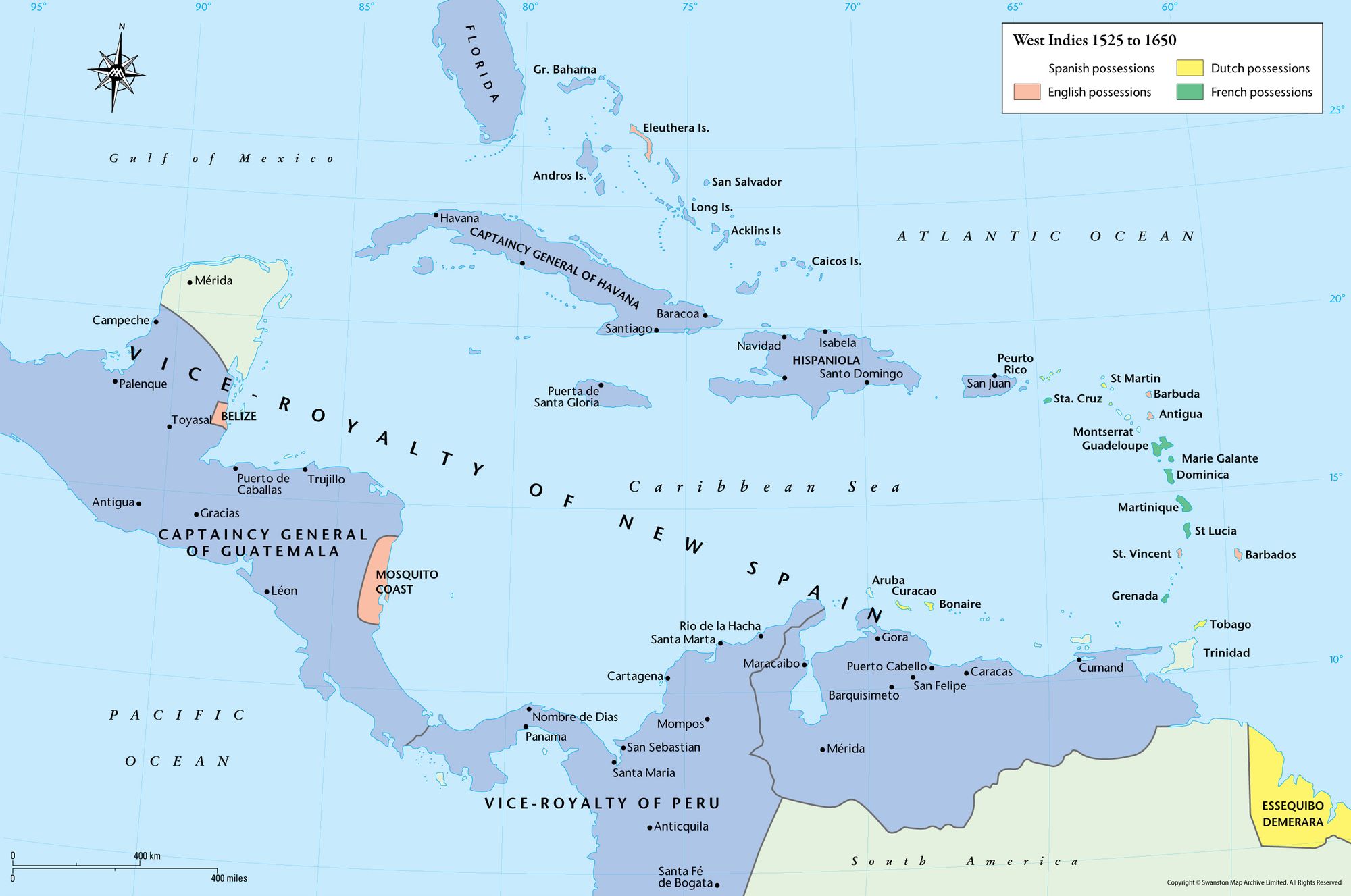
From the moment Columbus arrived in the Americas, the Taínos interrupted. They challenged the image of Indigenous peoples as passive and easily conquered. Toward the end of his first voyage to the Americas, Columbus received a rather unpleasant Christmas present when the Santa Maria, the largest of the three ships he sailed to the Americas, sank off the coast of Hispaniola. Columbus and his men used some of the wood of the ship to establish the first Spanish fortress, Navidad, in the Americas. A few weeks later, Columbus left behind thirty-nine colonists while he sailed back to Spain with the two other ships. When Columbus returned eleven months later, he found that the Taíno chief Caonabo had burned the fortress to ground and killed all the Spaniards left behind. This attack marked the beginning of an intense period of Taíno resistance across Hispaniola, Puerto Rico, and Cuba that lasted for over twenty years. One of the more well known examples of early resistance was the Taíno Rebellion in which a coalition of Taíno chiefs challenged European rule on on Puerto Rico from 1511 to 1518. Although the Spanish ultimately put down the rebellion, it highlights the extensive amount of resistance to the initial attempts by the Spaniards to conquer the Americas.
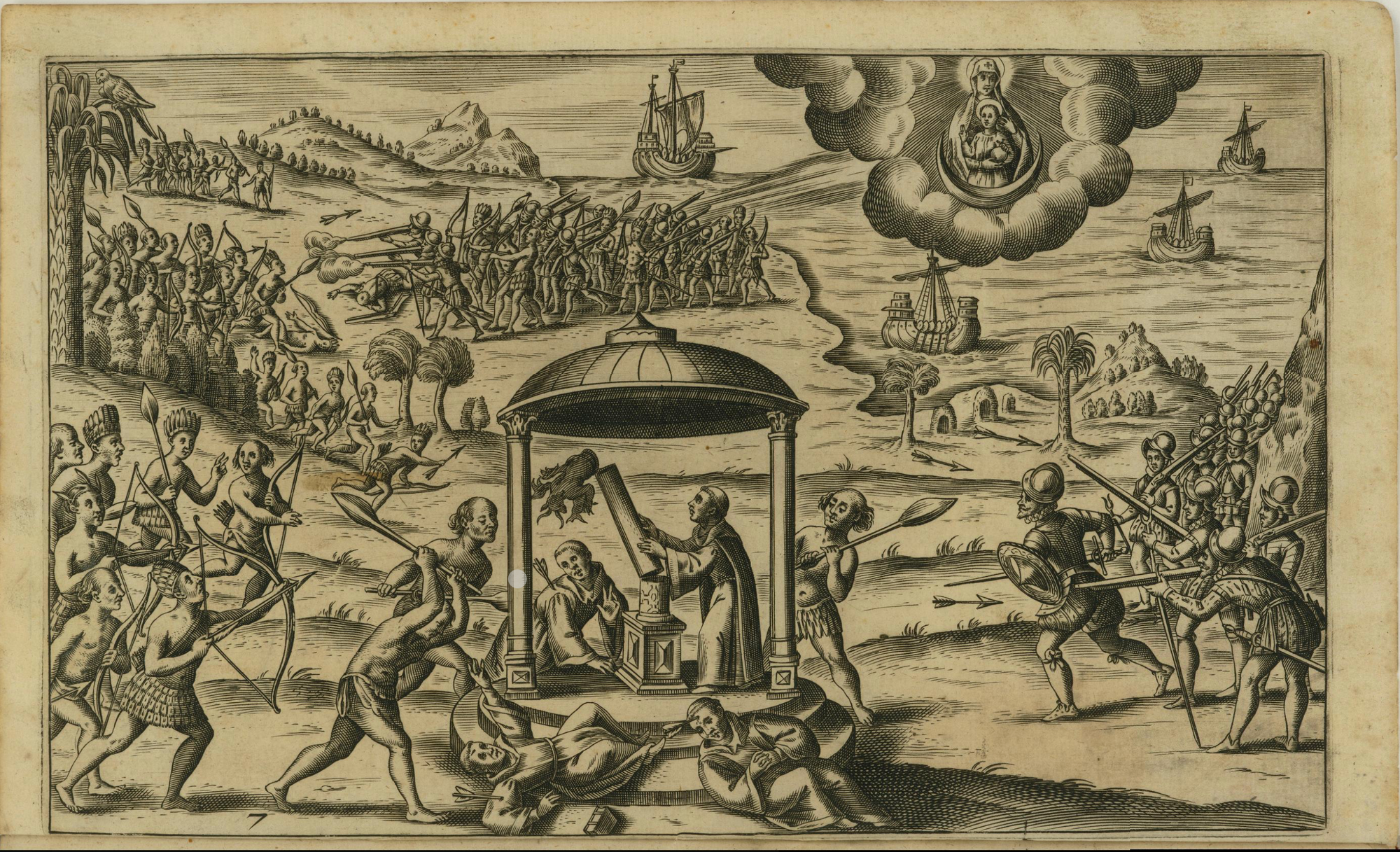
Although the Spanish gradually began to assert some control over the islands of the Greater Antilles, it didn’t mean that resistance ended. After the Spaniards initially exhausted the small amount of gold in the Caribbean, they attempted to transform the islands into centers of sugar production. The Spanish initially forced the Taíno population to work on the first plantations, but this system lasted only a short period because of the high mortality rates among the Taíno and the fact that many fled the plantations into the countryside. In his essay “From Tainos to Africans in the Caribbean: Labor, Migration, and Resistance,” Jalil Sued-Badillo argues that “in Puerto Rico, many Tainos escaped to the neighboring ‘Carib islands,’ shattering the myth of their traditional enmity with the inhabitants of those islands. In Cuba and Hispaniola ranchos de indios alzados, or maroon camps, were reported as early as the 1520s. The first cimarrones, a term generally associated with runaway blacks, were actually Taino escapees.”
The Spanish quickly turned to enslaved Africans to supplement Taíno labor. The Spanish brought the first enslaved Africans to the Americas in 1502 when the Governor Nicolás de Ovando established a new Spanish settlement on Hispaniola. Among the enslaved Africans, an unnamed African escaped and became the first African maroon in the Americas. Other enslaved Africans wasted no time in also challenging Spanish rule. On Christmas in 1521, enslaved Wolof peoples rebelled on plantation on Hispaniola owned by Diego Colón, the son of Christopher Columbus. Anthony Stevens-Acevedo describes the rebellion as “a concerted, well planned, collective and multilocal effort by the enslaved of la Española [Hispaniola], guided by subversive political intent, chiefly, abolishing slavery via the physical elimination of the population that the slaves themselves saw as their oppressors, namely, the Euro- Christian population, consisting mostly of Spanish colonizers.” Although the rebels failed to overthrow Spanish rule on the island, many of them settled in the areas outside the plantations and contributed to the rapidly growing maroon population on the island. As the Indigenous and African population swelled, life for the Spanish colonists became increasingly tenuous. A local council official on the island wrote to the King of Spain in 1587 and painted picture that highlights far more interruption than conquest:
On this island there have rebelled various negros and there are many now and their numbers have grown such that they have made a settlement or settlements called the Bahoruco, where we have received word that there are a large number of people. Every day they come to the mills and steal negros, some are taken by force, others go willingly. They even communicate secretly with negros mansos. They continue building up and fortifying themselves, having so much temerity and imprudence that they now come to take us from our homes without our being able to resist them.
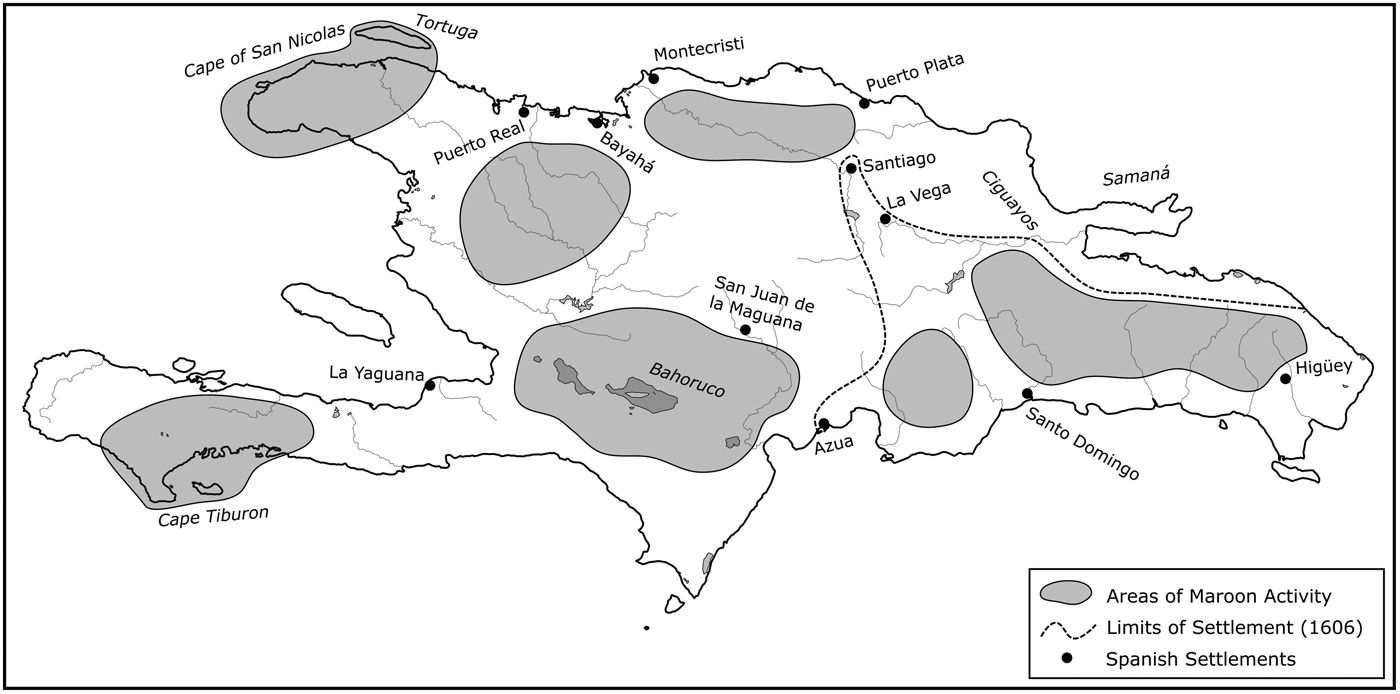
By the end of the sixteenth century, the Spanish only controlled the southeastern corner of the island. Robert Schwaller argues “maroons, first indigenous and then African, occupied broad swaths of the island, establishing self-sufficient subsistence communities. The ability of maroons to free themselves from the bonds of slavery, claim suitable locations, construct a subsistence base, liberate other slaves from Spanish captivity, and defend their communities by force of arms must be understood as a unique form of conquest.”
Between the initial rebellions by the Tainos and enslaved Africans and the establishment of thriving maroon communities, it quickly becomes clear that the popular image of the Spanish as conquerors obscures the historical reality of how much the interrupters shaped Spanish colonies in the Greater Antilles in the sixteenth century.
Central American Resistance
Just as the Indigenous peoples and enslaved Africans in the Caribbean islands challenged Spanish rule, the same combination of people resisted the Spanish in Mesoamerica in the sixteenth and early seventeenth centuries. While many world history textbooks now highlight the role of indigenous allies in helping Hernán Cortés and the Spanish conquistadors to conquer the Aztec Empire between 1519 and 1521, the story of this conquest also frequently ends in 1521. Despite having captured the capital of Tenochtitlán, it did not mean that Spanish had actually conquered all of Mexico. In Contesting Conquest: Indigenous Perspectives on the Spanish Occupation of Nueva Galicia, 1524–1545, Ida Altman argues that
large areas to the north, south, and west of central Mexico, which eventually became part of the kingdom of New Spain, remained outside the Spaniards’ control and indeed barely contacted by them. Home to a variety of of sociopolitical entities and linguistic and ethnic groups, some of these other regions and peoples – the Maya of present-day Yucatan and Guatemala to the south and the diverse peoples of western Mexico – would prove stubbornly resistant to the establishment of Spanish control. The difficult and sometimes prolonged campaigns conducted in these regions outside central Mexico underscore the reality that the surrender of Tenochtitlán and the fairly uniform submission of the mostly Nahua peoples of central Mexico were in fact prelude to, rather than the end of, the conquest of Mexico.
Throughout the 1520s and 1530s, the Spaniards attempted to assert control over western Mexico, but they found the native population unwilling to accept their supposed conquerors. By 1531, Altman describes the situation in Nueva Galicia as one in which “perhaps a small number of Spaniards were able to negotiate a modus vivendi with the Indians, for the most part Spanish-Indian relations were characterized by mutual distrust and incomprehension, resentment, and brutal violence.” In 1540 this two decade long standoff eventually erupted into a full blown revolt by the Caxcanes and a few other indigenous groups that would become known as the Mixton War. For over two years, the Caxcanes and their indigenous allies challenged Spanish rule in Nueva Galicia.
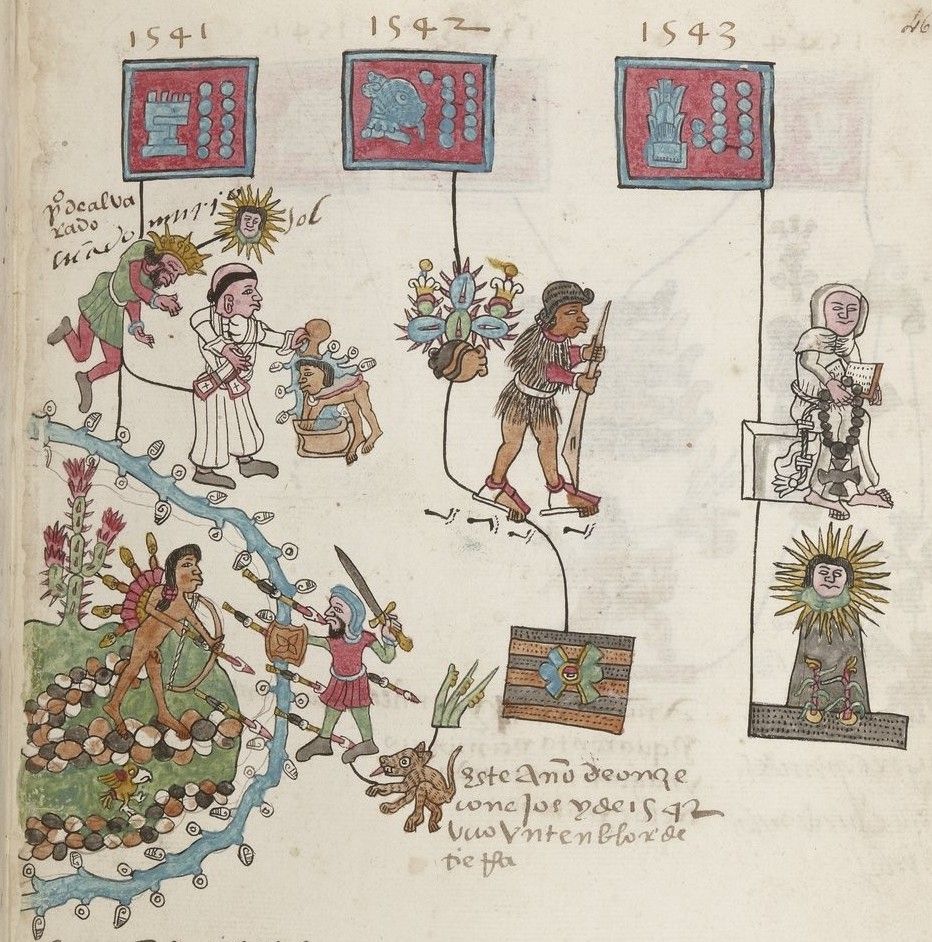
Almost as soon as the Spaniards, with the aid of other indigenous allies had won the Mixton War, they faced other challenges to their rule in Mexico. The Mayans in the northern Yucatan Peninsula launched another large rebellion, known as the Cupul Uprising, that lasted from November of 1546 to March 1547. In 1550, an extended fourty year conflict with the Chichimecas began in northern central Mexico. The Chichamecas were a nomadic people who were skilled warriors. They regularly avoided direct confrontation with the Spanish soldiers and focused more on ambushes and raiding Spanish settlements. Despite a prolonged attempt to defeat the Chichameca, the Spaniards ultimately bought peace in 1590. They agreed to provide the Chichameca with food and clothing and freedom from taxes. In all three of these rebellions, we see not only the ways in which Indigenous peoples refused to accept Spanish conquest throughout the sixteenth, but also the way the Spanish were only able to “conquer” with the aid of Indigenous allies. Despite often having superior weaponry, the Spaniards were simply outnumbered and relied on indigenous groups for military aid. While this fighting among Indigenous groups may seem surprising at first, Robert W. Patch, in his essay “Indian Resistance to Colonialism” argues that these groups were of different cultures and had been rivals prior to the arrival of the Spaniards.
Indigenous resistance in Mesoamerica was accompanied by resistance from enslaved Africans. During the sixteenth century, Spaniards began to import enslaved Africans to work in the silver mines in northern Mexico and the sugar plantations of southern Mexico. Just as enslaved Africans had escaped from the plantations on Hispaniola, they also escaped from those in southern Mexico. Many of these maroons established palenques, simple agrarian communities of African and indigenous peoples, in the coastal highlands. Probably the most well known palenque in Mexico was set up by Gaspar Yanga. He and other enslaved Africans on the Nuestra Señora de la Concepciónplantation revolted in 1570, and then established a new community which evaded Spanish control. In 1609, a Spanish army failed in defeating and recapturing Yanga and his followers. Instead, the Spanish agreed to recognize San Lorenzo de Los Negros as an independent community, and the twentieth century residents of town now known as Yanga began to refer Gaspar Yanga as “El Primer Libertador de las Americas.”
(While looking for images for this essay, I came across this video by D Smoke and Snoop Dog for a song and video released earlier this year. In the video, they reimagine Yanga as a modern day liberator fighting against drug dealers attempting to enslave Black communities.
Further south there was another extensive palenque in the Panamanian isthmus. In her essay “Black Rebels: The Cimarrons of Sixteenth-Century Panama,” Ruth Pike argues “The Isthmus of Panama was one of the places where the cimarrons achieved their greatest power and extension. None of the cimarron revolts elsewhere in the Spanish Empire in the sixteenth century such as in Mexico, Colombia, or Venezuela equaled the movement in Panama in numbers, intensity, leadership and duration.” One of the most well known leaders was King Bayano who unified all the cimmarons of the Atlantic coast of the Isthmus. His numbers were estimated to be over 1,000, and during the 1550s he and his followers fought the Spanish to a stalemate. It was only through treachery that the Spanish governor in the region was able to capture Bayano. Even with Bayano arrested and imprisoned, the cimmarons in Panama continued to resist the Spanish until the end of the century. By 1600 the Spaniards had gradually gained enough control over the regions that relatively few enslaved Africans were able to escape and join the palenques.
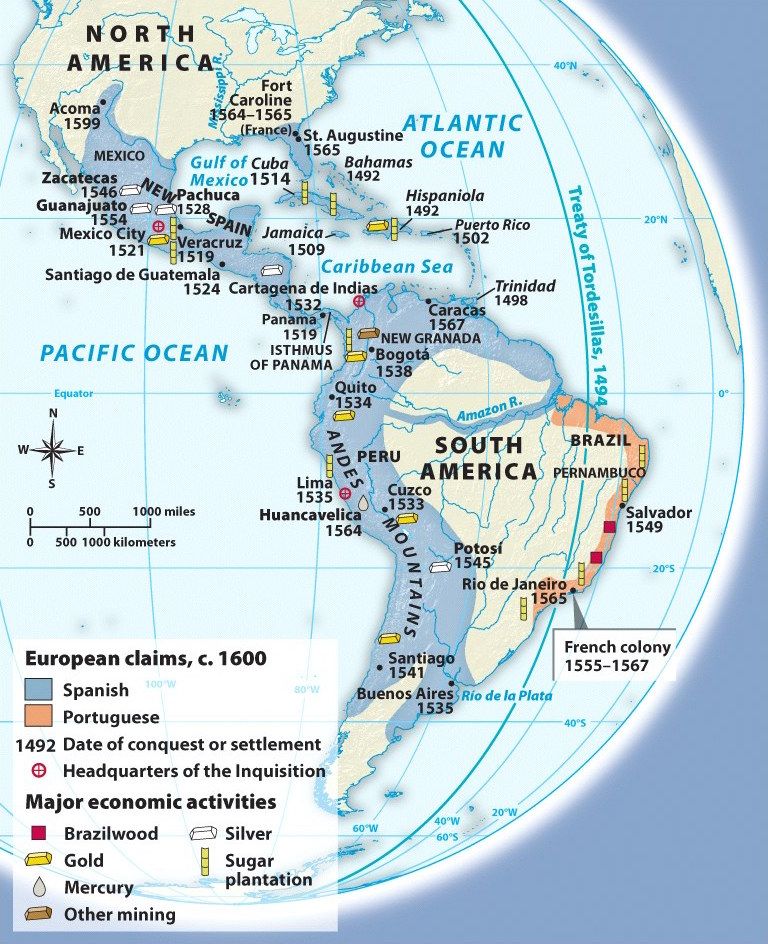
South American Resistance
The popular story of Francisco Pizarro as the conqueror of the Inca Empire is in many ways as equally problematic as the story of Cortés and the Aztec Empire. Pizarro may have captured the Incan capital at Cuzco in 1533, but the Spanish had not conquered the rest of the empire. In fact, Manco Inca Yupanqui, an Incan noble who had previously helped the Spanish capture Cuzco, revolted against the Spanish, gathered together a large Incan army, and attempted to retake Cuzco in 1536. Although he failed to recapture the city, he established what some historians refer to as the Neo-Inca state in the region of Vilcabamba. In Voices from Vilcabamba: Accounts Chronicling the Fall of the Inca Empire there is a short overview of the Incan state at Vicabamba and some primary sources about it. Over the next thirty-six years, Manco Inca and three of his sons ruled this small Incan state. At different points, the Incas of Vilcabamba were in open rebellion with the Spanish, cooperated with the Spanish, and treated each other with momentary indifference. The key takeaway here for the purpose of this essay is that the Incas of Vilcabamba were able to successfully hold off Spanish conquest for nearly four decades.
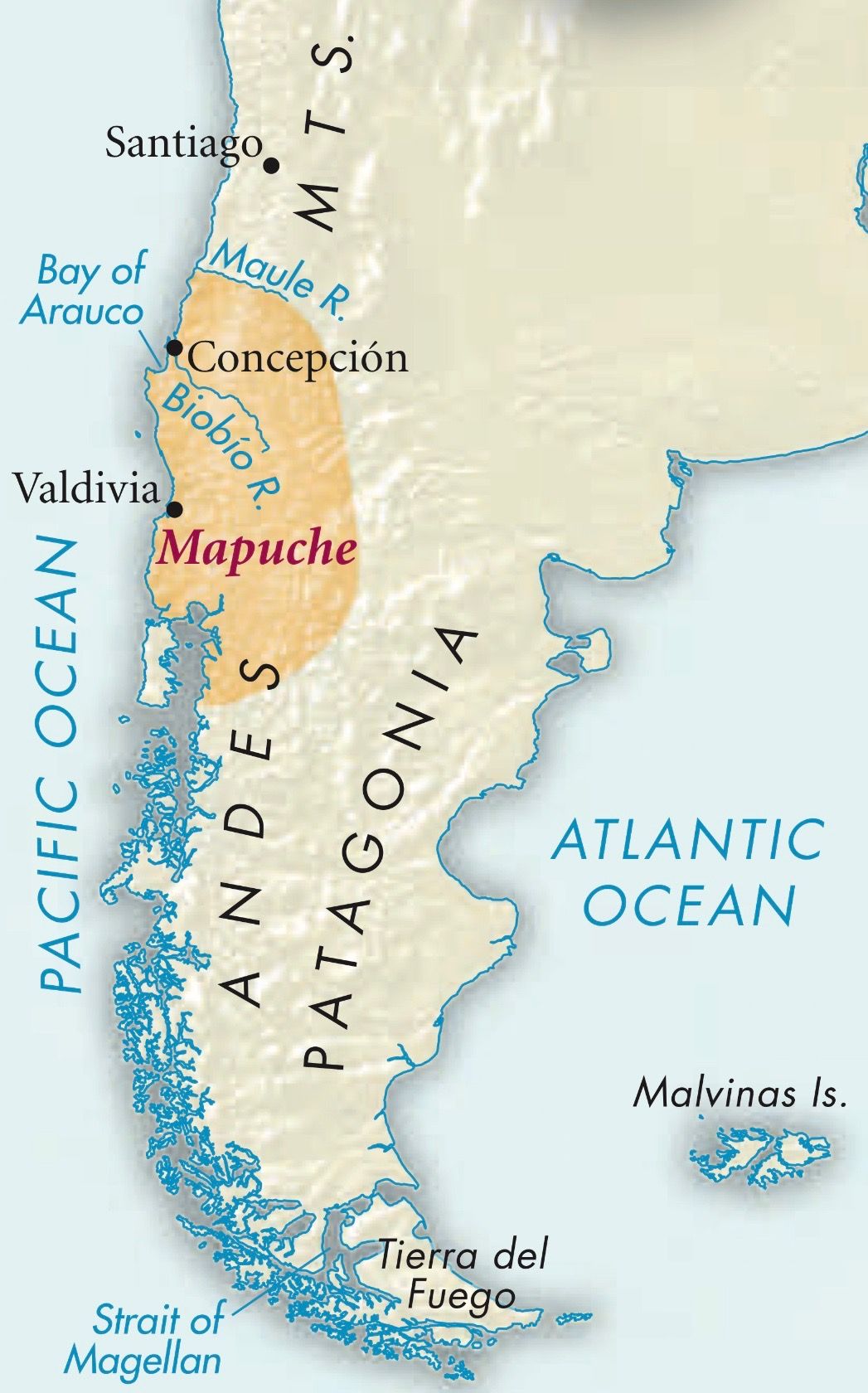
Further south, the Spaniards also attempted to extend their control along the present-day Chilean coast. In Latin America in Colonial Times, Matthew Restall and Kris Lane briefly recount the history of Mapuche resistance. In 1550, the conquistador Pedro de Valdivia “conquered” the Mapuche and attempted to integrate them into the Spanish empire. Just three years later, the Mapuche rebelled against the Spanish. They also captured Valdivia, executed him, and then ritually consumed parts of Valdivia. The Spaniards frequently accused Indigenous peoples of cannibalism to present them as barbaric and to justify Spanish conquest. In this case, it may very well be that the Mapuche wanted to intimidate the Spanish. Over the next fifty years, the Mapuche and Spanish fought each other multiple times. The Mapuche used guerrilla warfare against the Spanish, so they avoided being overwhelmed. By 1600, the Mapuche had driven the Spanish out of the region south of the Biobío River. The Spaniards were never able to reconquer the region, and the Mapuche people remained independent until the nineteenth century.
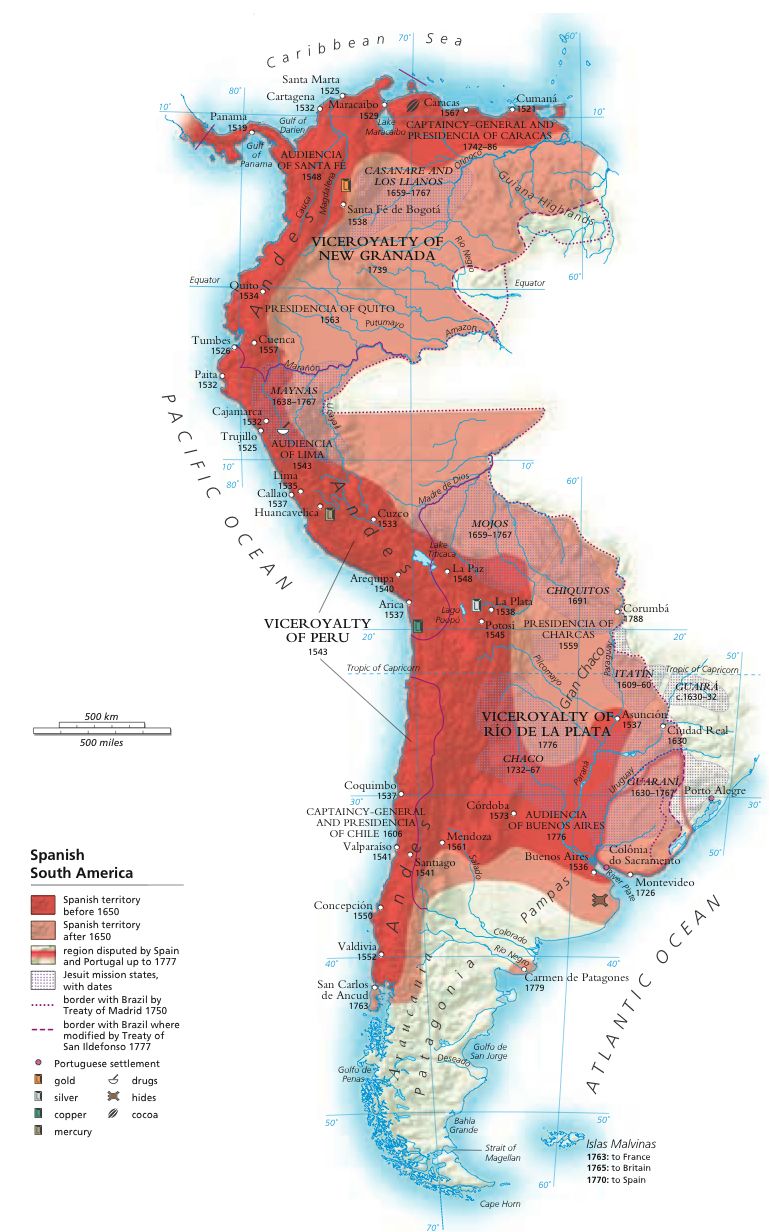
Enslaved Africans in South America also challenged Spanish rule during the sixteenth century. In Quito 1599: City and Colony in Transition, Kris Lane vividly describes community at Esmeraldas. During the 1540s and 1550s, slave ships crashed along the coast of present-day Ecuador. A number of enslaved Africans escaped into forest. In cooperation with local Indigenous communities, the maroons established a thriving community. By the 1590s, the Spanish treated the maroons of Esmeraldas as an independent community and were free from tribute demands. To commemorate the peaceful relations with the Spanish officials, Don Francisco de Arobe, the leader of the community commissioned a painting of himself and his two sons that was sent to King Philip III of Spain in 1599.
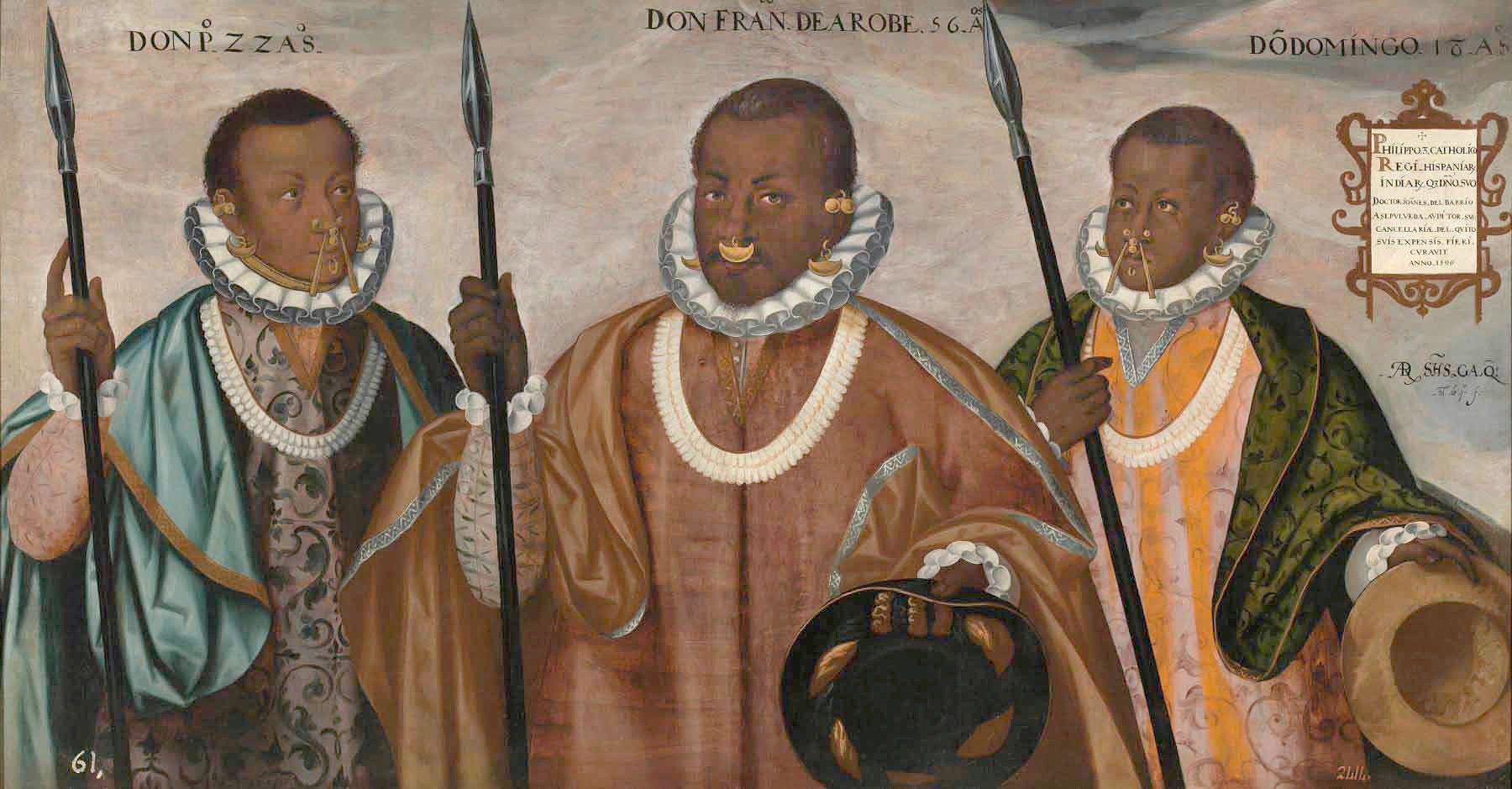
The Portuguese in Brazil also struggled to successfully conquer their territory in the Americas. During the sixteenth century, the Portuguese established sugar plantations along the coast of Brazil. By the end of the century, quilombo communities, similar to Spanish palenques, were well established especially in the Pernambuco region of northeastern Brazil. The quilombo of Palmares was the most well known and largest of these communities. During the seventeenth century, its numbers were over 10,000.
All across the vast continent of South America, Africans and Indigenous peoples lived beyond the reach of the Spanish and Portuguese. Instead of merely avoiding capture, these communities were able to successfully challenge European rule and interrupt the “conquest” of the Americas.
Back Across the Atlantic, Back to the Present
Just as enslaved Africans across the Americas challenged the Spanish and the Portuguese, Africans in Africa also challenged the Portuguese in the sixteenth century. In 1493, the Portuguese established the colony of São Tomé as a sugar plantation on the coast of western central Africa. The colony also became an important transit point for Portuguese slaving. In 1517, there was a rebellion on the island that was most likely led by freed slaves, according to Robert Garfield. This rebellion was a short-lived uprising, but it foreshadowed the much larger rebellion of 1595. In July of that year, Amador Vieira, an enslaved African, led an island wide rebellion against the Portuguese. Amador became Rei Amador as he and his followers ruled the island until 1596.
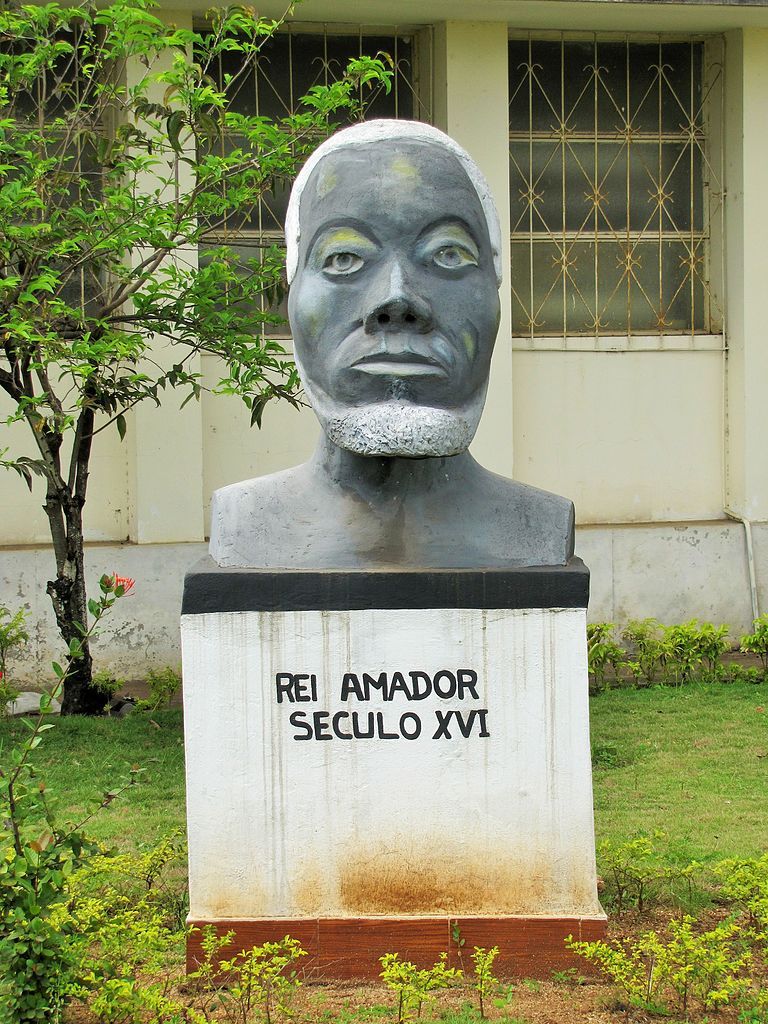
Rei Amador’s rebellion reminds us that wherever the Spanish and Portuguese attempted to conquer in the sixteenth century, they were met by African and Indigenous resistance. Despite the stories of conquistadors that dominate our textbooks and myths about this period, the conquest was an “incomplete conquest” in the words of Matthew Restall and Kris Lane. Despite knowing they had failed to conquer peoples fully, it was the conquistadors themselves who first popularized the myth of conquest. These men were proud and had no wish of being seen as failures who unable to conquer people described as primitive and barbaric. These conquistadors also had royal sponsors back in Madrid and Lisbon whom needed to be convinced of their usefulness of these costly adventures. They had no wish to tell tales about the peoples who interrupted.
Now as we teach the history of this first century of European colonization in the Atlantic, we have our own choices to make about what kind of history we tell. Do we choose to present maps of the Americas in which the solid colored areas of Spanish and Portuguese rule suggest that conquest was completed in 1521 or 1533? Do we choose to tell only the stories of the why European conquered? Or do we choose to disrupt the narrative and make more effort to highlight the stories of those who interrupted?
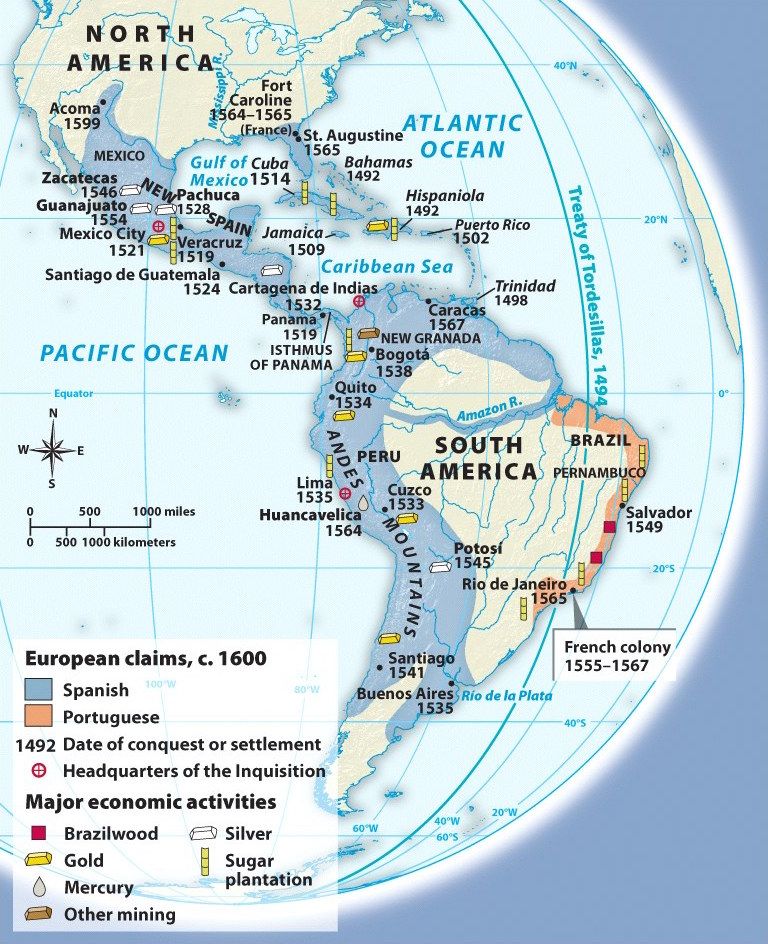
Epilogue
I’ve been thinking about this essay for a number of months now. I had been collecting stories, websites, and books about African and Indigenous resistance in the sixteenth century, but I was unsure of how to make sense of or present these resources in a logical and coherent manner. I still feel that way, even though I spent the whole of Indigenous Peoples’ Day working in this essay. I know that I have left out many stories, and I apologize for that. I hope to put together a resource page which presents all the relevant resources.
As I think about how to teach about the people who interrupted in the classroom, I’m going to borrow Michelle Tuyn’s idea of a mini-research project in which students investigate African agency in the late nineteenth and early twentieth century. I encourage teachers to have students choose from these many stories of Indigenous and African resistance in the sixteenth century, do a little of their own online research, and then share the stories with their classmates. Maybe in this way we can interrupt the flow of the textbook.
Liberating Narratives Newsletter
Join the newsletter to receive the latest updates in your inbox.



